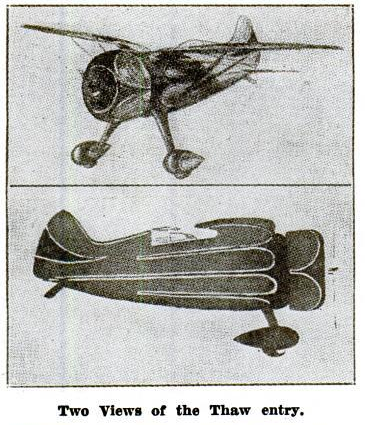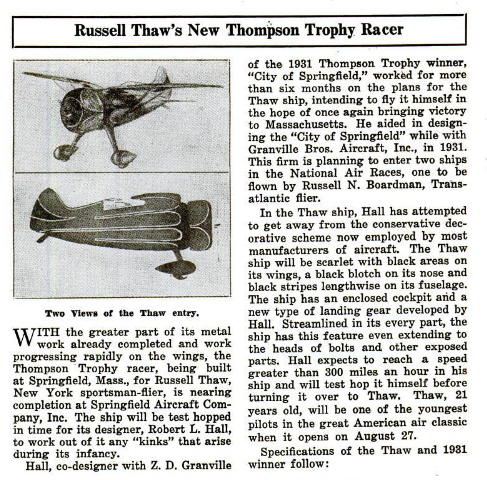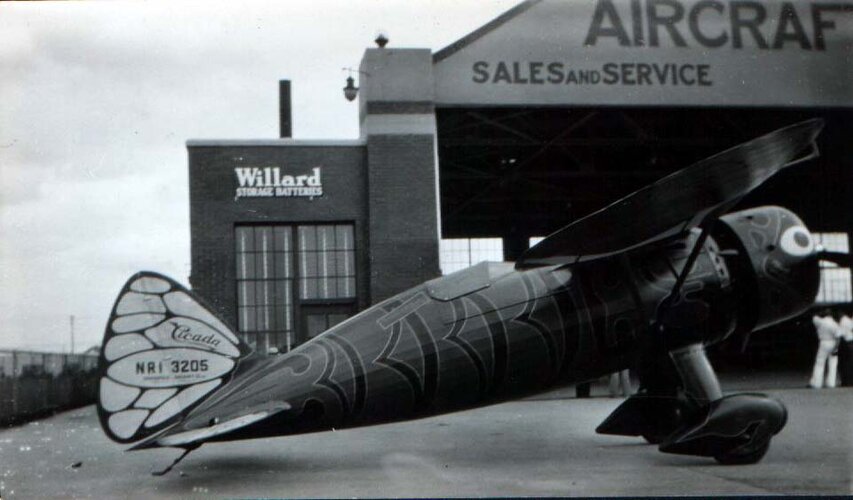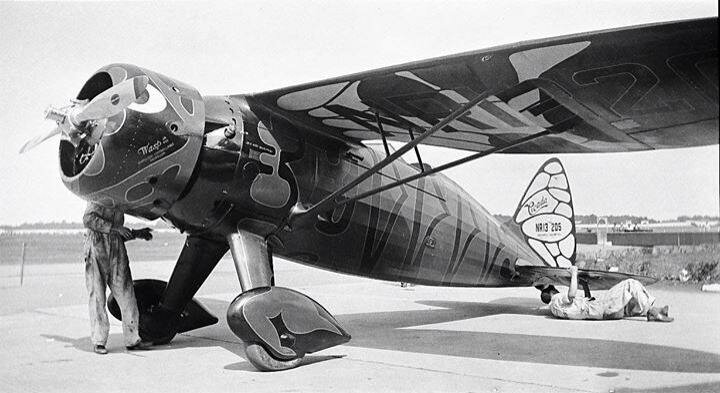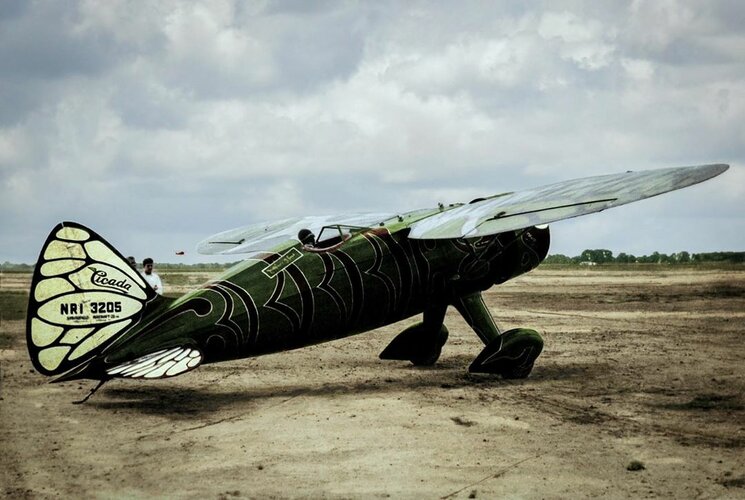- Joined
- 11 March 2012
- Messages
- 3,119
- Reaction score
- 2,955
Does anyone know anything about the 1932 Springfield Aircraft Company's "Cicada" NR 13 205?
It has a radial engine, semi-elliptical shoulder-mounted wings, circular fuselage cross-section, fixed landing gear with spats and a spectacular paint job resembling an insect. The single, open cockpit is aft of the wings.
A single photograph was posted on the Facebook page "Rare and unusual aircraft types."
It has a radial engine, semi-elliptical shoulder-mounted wings, circular fuselage cross-section, fixed landing gear with spats and a spectacular paint job resembling an insect. The single, open cockpit is aft of the wings.
A single photograph was posted on the Facebook page "Rare and unusual aircraft types."

